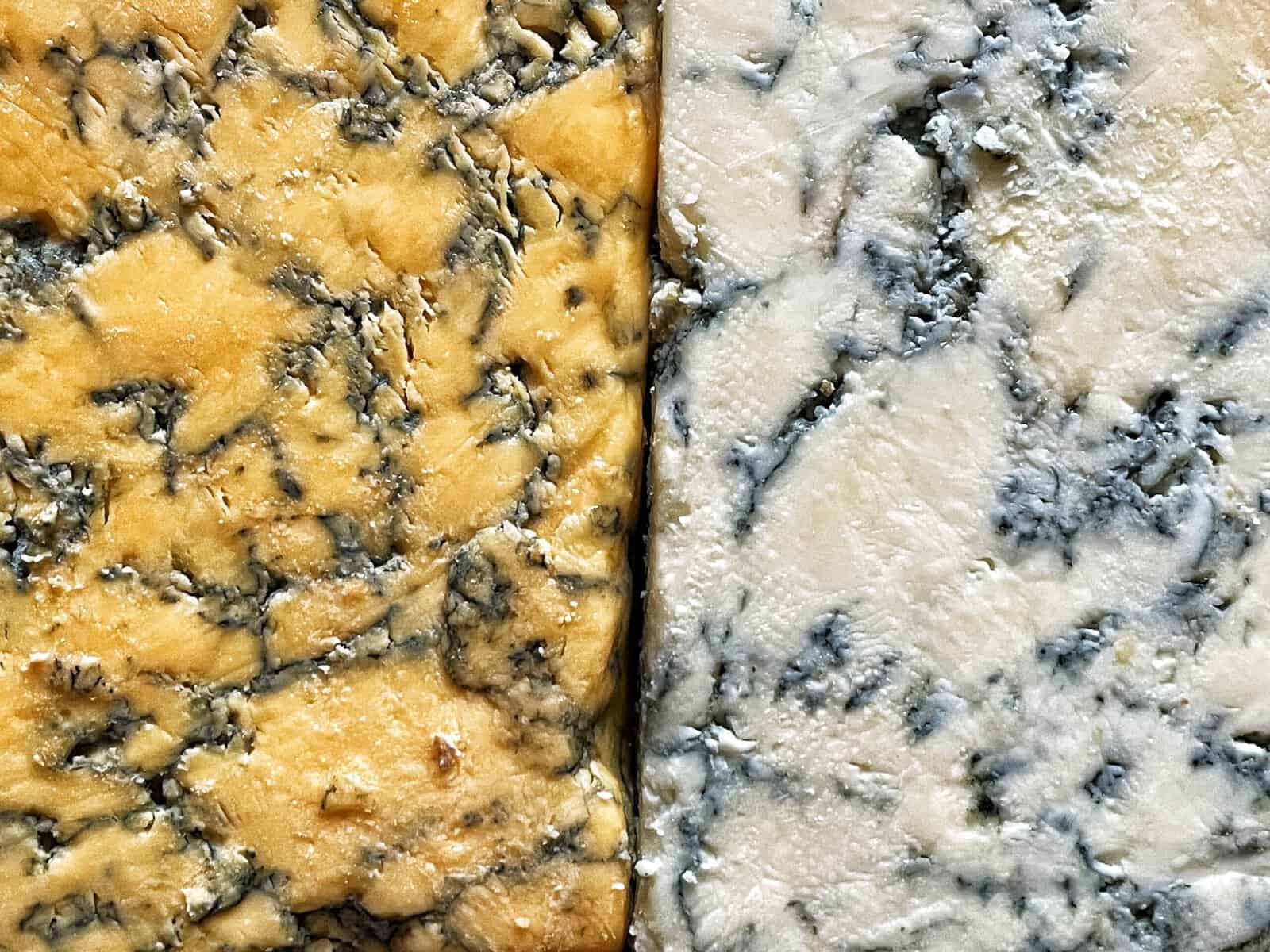
A side by side of Shropshire Blue and Long Clawson Stilton. Photo by Christine Burns Rudalevige.
Psychologically, humans perceive orange to be warm and inviting. Physiological studies show it also stimulates our appetites. So, the decision to place a wedge of French Mimolette, Dutch Aged Gouda, Wisconsin Cheddar, English Cheshire, Red Leicester, or Shropshire Blue on a cheeseboard for chromatic variety is scientifically sound.
These cheeses obtain their sweet potato hue from annatto, a colorant extracted from dried seeds of evergreen achiote shrubs native to the tropical Americas. Mayans and Aztecs added it to cacao drinks, a practice the Spanish brought back to seventeenth-century Europe.
A white paper published by Givaudan Sense Colour, a natural food dye supplier, says the carotenoid pigments in annatto are oil-soluble bixin and its water-soluble derivative, norbixin. “Norbixin binds to dairy proteins during cheesemaking, imparting excellent color and stability,” it reads.
Experts say the extracted norbixin doesn’t affect the flavor of cheese because it’s used in such tiny amounts. Appleby’s Dairy in northwest England, for example, adds just 5.75 fluid ounces of annatto to every 925 gallons of milk for its sunset-orange Cheshire.
British producers such as Appleby’s Dairy, who make cheese with and without annatto, point to a growing body of anecdotal evidence that demonstrates annatto also brings textural elements to the table.
Sarah Appleby says her dairy’s white Cheshire has a “drier, more obvious crumble rather than the juicy crumb” of its hued Cheshire.
“We see a difference in how the curd drains,” explains William Clarke, who oversees production of Leicestershire Handmade Cheese Company Sparkenhoe Blue and Sparkenhoe Shropshire Blue in Upton, Warwickshire. The curds are only slightly yellow to start but get more orangey as they drain, and the annatto sticks to the fat protein matrix. “We see Shropshire Blue curd holding onto more whey,” he explains.
“The moisture doesn’t make the cheese creamier, but it’s certainly more succulent. Meatier, even,” says David Clarke, William’s father and co- founder of Leicestershire Handmade Cheese Company, who also uses annatto in the dairy’s Red Leicester.
The younger Clarke says increased moisture makes the blue mold propagate quicker and impacts the cheese’s shelf life once cut.
Kim Kettle, farm liaison director at Long Clawson Diary in Melton Mowbray, Leicestershire, says the composition of milk and cultures in the company’s Stilton slightly differ from its Shropshire Blue, so he can’t say with certainty that annatto is the sole reason why Shropshire Blue is a milder, moister cheese that appeals to those who typically avoid blue cheese. He did recall a time when cheesemakers tweaked the recipe for a small batch of Shropshire Blue without annatto. It was difficult to determine whether alchemy or hard chemistry was the root cause of the textural changes, but “the cheese was simply not the same.”
Sneaky Suspicions
In northern England, orange cheeses have long been regarded as suspicious. In A Cheesemonger’s History of the British Isles, (Profile Books, September 2021), author Ned Palmer explains that those misgivings date back to medieval times when wintertime milk was thin and its resulting cheese pallid. Medieval makers perked up their products with the juice of marigolds or lady’s bedstraw. Thanks to the advent of modern feeding regimens for cows, there is no longer a noticeable change in milk quality from season to season, so annatto is not masking anything, but it still adds a distinctive color.




